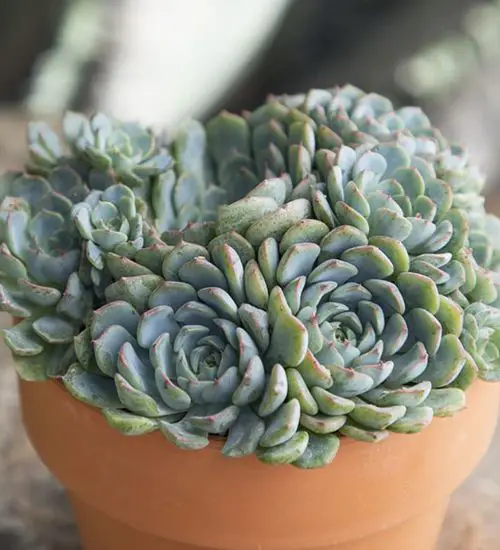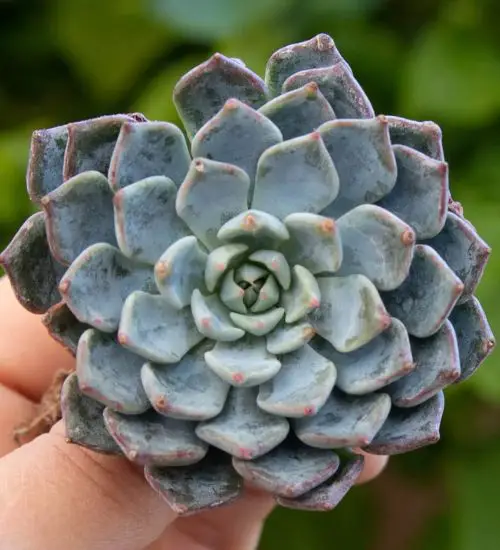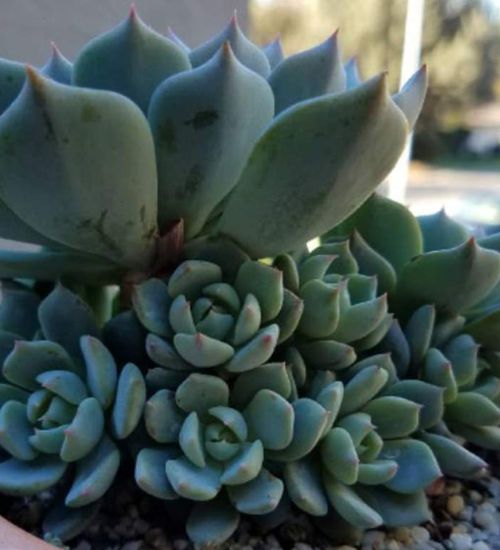Sun: Partial sun to partial shade
Water: Typical water needs for a succulent
Temperature: Zone 9a from 20° F to 25° F (-6.7 ° C to -3.9° C)
Winter Survival: Not cold hardy
Propagation: leaves, offsets
Flower: In the Spring
Flower Type:
Toxic: Generally non-toxic to humans and animals
Dormant: winter
Space Requirement: Indoors & Outdoors
Common Problems: No major pests, Plants may rot if overwatered
Where to buy Echeveria ‘Azulita’?
Basc Care for Echeveria ‘Azulita’
Watering
Watering for Echeveria ‘Azulita’ is a simple task. It requires Typical water needs for a succulent.
One simple tip for you is that you can use some online apps to check the soil status before you go water your succulents. I would recommend the ThePlantsCheck app, it has some nice features there.
Fertilizing
Only feed this succulent during its active growing seasons which means spring and fall. Use the right fertilizer applied in the right amounts. Applying half-strength balanced fertilizer every month or so is recommended for optimal results.
Do not fertilize during winter as the plant is dormant.
Sun & Location Requirements for "Echeveria ‘Azulita’"
Echeveria ‘Azulita’ loves partial sun and shade. This means it should be placed in a spot that gets some direct sunlight, but also has some protection from the midday heat. It's best to find an area where the succulent can get four to six hours of sun per day.
In order to ensure that Echeveria ‘Azulita’ survives the winter, insulation and drainage are essential. A layer of mulch or gravel around the plant can help keep the roots warm during cold temperatures. Furthermore, avoiding exposure to wind and sun can reduce the risk of frost damage and promote longevity for your succulent.
Any succulents in the group will need a medium space to grow. You can place your pot at your table or window. Since this plant needs more space than mini succulents, you should consider do not plant them together with other succulents/plants.
Propagation
Propagating succulents from leaves is an easy and cost-effective way to grow new plants. All you need are a few healthy leaves from the mother plant, some potting mix, and regular watering. After a few weeks you'll have brand new succulents that you can watch grow!
One way to propagate Echeveria ‘Azulita’ is by offsets. Taking an offset from the mother plant and potting it into soil will give you a brand new succulent with minimal effort.
Toxicity

Echeveria ‘Azulita’ is generally non-toxic to humans and animals. However, the plant may contain certain toxins which can cause mild skin irritation if it is ingested or comes in contact with skin. Therefore, it is important to keep the plant away from children and pets for safety reasons.
Pests and Diseases
Echeveria ‘Azulita’ is not affected too much by common pests and diseases like most of the other succulents.
It may get attacked by %pest_names%. To prevent this from happening, keep your succulent in a well-ventilated area and check it regularly for any signs of pests or health problems. If you do spot any, treat the plant using below methods.
%pest_treatment_methods%


